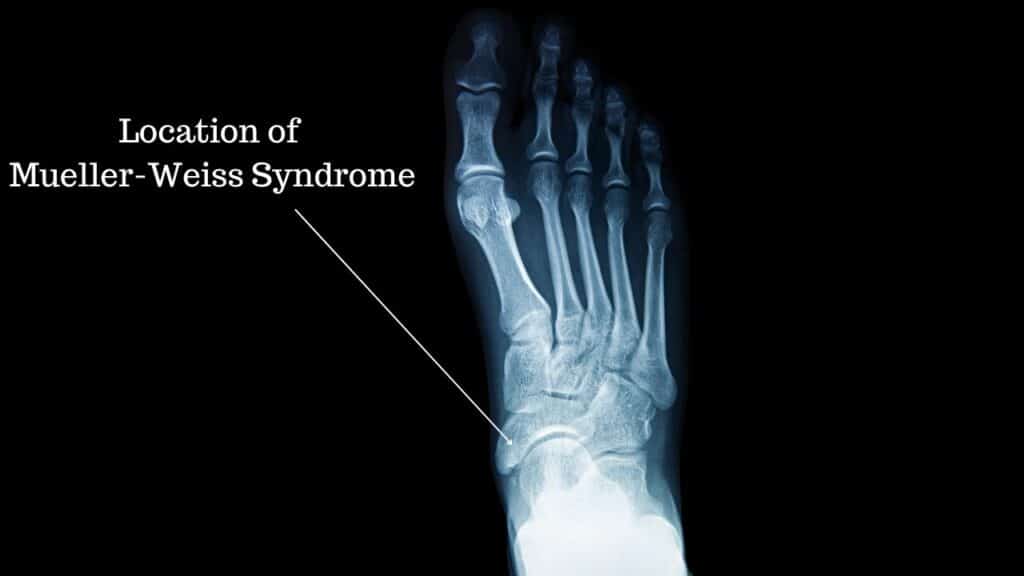Posterior Tibial Tendonitis
Read More >
Mueller-Weisse Syndrome, also known as Brailsford disease, is the spontaneous osteonecrosis of the navicular bone that causes pain in the midfoot and surrounding tarsal bones.
The navicular bone forms part of the medial longitudinal arch of the foot, playing a vital role in the articular stability of the foot and acting as an attachment point for numerous ligaments and tendons.
Mueller-Weisse Syndrome is rare but has become better known since tennis player Rafael Nadal was diagnosed. It is more common between the ages of 40-60, appears more prevalent in women than men, and is often bilateral.
Mueller-Weiss Syndrome causes chronic pain in the foot’s medial arch and hindfoot. Symptoms are often worse when walking, standing or running.
Pain often improves with non-weight bearing position but immediately worsens when weight bearing. Tight-fitting, unsupportive shoes can be uncomfortable, and the patient may notice a change in foot shape.
Often, there is swelling of the foot, and it is painful to palpate the arch of the foot, and symptoms are normally gradual in onset.

The exact causes of Mueller-Weiss Syndrome are unknown. Some speculate that congenital malformation, osteochondritis, chronic stress fracture, and traumatic or biomechanical origin necrosis are potential causes.
Suboptimal ossification is believed to be a primary cause, combined with a biomechanical overload from conditions such as club foot, subtalar varus, or hallux rigidus.
Other causes could include diabetes, smoking, alcohol use or systemic conditions that affect vascular perfusion.
As Mueller-Weiss Syndrome is extremely rare, it can be difficult to diagnose in a clinical setting, and often patients are referred for imaging.
Clinically, we expect swelling and tenderness over the midfoot with a collapsed medial arch height. The flattening of the arch can give the impression of a pseudo hindfoot valgus.
An x-ray can diagnose Mueller-Weiss Syndrome, where we expect to see a change in the outline of the navicular bone so that it looks like a comma.
Treatment for Mueller-Weisse Syndrome can be difficult and should be under the guidance of a Physical Therapist or Podiatrist.
Manual therapy techniques such as massage and gentle mobilisations can relieve pain, while a strengthening and stretching programme can help optimise the foot’s movement.
Orthotics and cushioned supportive footwear can relieve pain and increase patient function.
In severe cases, surgical intervention may be recommended if conservative measures fail. Talonaviculocuneiform arthrodesis with bone grafting may be recommended by your consultant

This is not medical advice. We recommend consulting with a medical professional such as James McCormack if you have foot pain.
He offers Online Physiotherapy Appointments weekly or face-to-face appointments in his Fulham clinic.